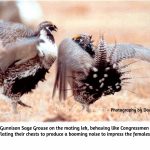Partnering with a Border Collie
Barring strange accidents or chance, I’ve partnered with my last dog – mostly because my last dog was such a superior partner.
She was a border collie, Zoe; and Zoe was actually the only dog I’ve ever really been invited to partner with, however unworthy I was at it. There were a couple other dogs in my life when I was a kid, but they were just family pets. Bred for petdom. Border collies aren’t bred to be pets; they are bred for intelligence and bred for work, and they more or less insist on – I would say, deserve – a working partnership. And my partnership with Zoe was not really a “fulfilled” partnership because I didn’t really have any work for her to do that was worthy of her skills and willingness.
Our daughter brought her into our lives; Zoe was a gift from her godfather, Steve Allen, a rancher over in the valley of the North Fork of the Gunnison who, for a time, raised and trained border collies on the side. Then Sarah went away to college three years later, and my (human) partner and I inherited Zoe, for what turned out to be the rest of Zoe’s life (14 years total).
What border collies can do in a working situation is impressive. “Sheep dog trials” are held around the country, to show off the skills and intelligence of these dogs. My (human) partner and I once went to the trials up in Meeker, Colorado, to watch the human-and-dog teams work through an almost fiendish set of challenges, that begins with sending the dog out full speed on a quarter-mile circling run, to move a small herd of semi-wild sheep down through some slalom-like gates, and ends with some really complex penning challenges involving splitting the flock to separate out some with colored bandannas.
The champion dogs at the Meeker trials are often older females: they can still turn on the “berserker” look that gets the sheep in gear – wild-eyed, teeth bared and panting like a furnace, moving in a crouch as if about to spring – but they’ve matured like a certain kind of no-nonsense woman, the kind of woman you just don’t mess with, and those gal dogs have worked so long with their human partner (often enough exactly that kind of woman) that one could swear they are reading each other’s minds. And that may not be too far from the truth. Steve Allen said the biggest challenge for the dog’s partner is not distracting the dog with too much instruction.
We of course had nothing in our towny lives to provide any comparable work for Zoe. Not that moving stock is the only kind of work they find acceptable: border collies can be good baby-sitters; they are used in search and rescue work; they are good in hunting; they are great Frisbee-catchers; and they will keep your yard cat-free. They’ve been recruited for therapy and assistance work for people with disabilities; one border collie became the “hearing-ear dog” for a woman with severe hearing loss.
But the best tasks we could come up with for Zoe were little things, like the human partner sending her downstairs in the morning, if I was up early, to let me know it was coffee time. Out hiking, Zoe took it upon herself to scout out the trail ahead, stopping at trail forks to consult on which to take. There was also a lot of ball-playing, and she invented tasks for herself, like patrolling the fence out front, tearing along it to keep the cars moving on, but jumping up on it to welcome pedestrians. Neighbors on both sides of us eventually got border collies themselves after daily exchanges with Zoe at the fence.
What really got me about Zoe was her eyes. She would come sit on the floor in front of me and stare at me – not the berserker look she would have used on the sheep, but neither that sappy look of adoration and submission we tend to associate with dogs. A look more like a question: “Hello? Are you there? Isn’t it time?” It was as though she had something to tell me that required me to be able to converse in her way.
It got to me: “What, Zoe?” I would say. Sometimes she would actually lead me off, maybe to the door, or her food dish, but sometimes to some place with no point at all that I could see. “What?” I would ask, and she would just stand there looking at me, tail in a slow swish, tongue out in a thinking-mode pant, waiting for me to get smart enough to understand.
Zoe made me think a lot about the “interspecies contract” whereby some of the wolves long ago decided to throw in with humans, to start collaborating with us rather than competing. Genetic analysis proves pretty conclusively that all dogs – even little Chihuahuas – are “wolves in dog clothing.” There’s a lot of speculation on when some of the wolves, coyotes and foxes might have decided to switch rather than fight. Most guesses place it around the time, 10,000-30,000 years ago, when most humans left off their hunter-gatherer lives and began to settle into agricultural and pastoral villages – farming where farming was possible, and herding the big herbivore herds where farming was marginal.
Both farming and herding should probably be viewed not just as “advances” in human culture, but as defensive measures brought about by the population increases that accompanied the mellowing of the climate with the retreat of the last glacial epoch. Gatherers started planting seeds in centralized watered places they could protect as pressure grew from other gatherers; hunters found themselves having to protect the herds they had always hunted from the growing populations of other human hunters as well as from the growing populations of non-human predators. It was not an easy time; open free-for-all turf war often resulted between bands of humans, and between packs of predators – and between the bands and packs, for that matter.
It was in that time of transition that the contract between wolves and humans was presumably born, at the edge of the firelight. Those who say “the leopard can’t change its spots” have no answer for why the wolves were able to transcend their “instinct” to run down, harass and kill the big herbivores, and perform the contradictory act of protecting them – even from their own kind who’d stayed beyond the firelight. My feeling (mostly from having known Zoe) is that it had to have been an act of reasoning, the kind of thinking that we humans are supposed to have a sole proprietorship on, however little we seem to employ it.
Which party initiated the contract? I’m inclined to think it was probably the humans, with an offer of food. But that may just be because I am a human. And even though it is on the surface a “will work for food” contract, I think it has to have involved an offer of respect too. A dog like Zoe doesn’t work only for food.
Like most things through time, the relationship has been corrupted in many ways; it’s often considered to be a master-slave relationship – not really a contract at all – with the dogs being forced into situations in which no dog would willingly participate. Dogs get turned into attackers and killers; female dogs get bred to death in puppy mills; dogs get bred into genetic disasters. Decide for yourself which party is more bestial.
An engaging and haunting novel about dogs and humans is “The Story of Edgar Sawtelle,” by David Wroblewski, a story of three generations of dog breeders in upper Wisconsin who were trying to breed a strain of super-smart, empathetic dogs. The book included a correspondence between the Edgar’s grandfather and another dog-breeder, who skeptically observed that the only way we’re going to get better dogs than we have now is to become better humans.
Having known Zoe, I can only agree.
[PAGE BREAK]
She may have forgiven me
For never finding the time to learn
To talk to her with my eyes.
I’d proclaim her intelligence
Was limited by the lack of vocal cords,
Opposable thumbs, et cetera, and
All the while she’s standing there,
Her eloquent eyes exposing my limits.
That’s not all she forgave:
I couldn’t match the unconditional
Commitment she brought to our life
Together, her bottomless capacity for
Forgiving our slights – our forgetting
To let her in, to let her out, to feed her,
To meet her eye, to hear what she wanted
To give us through those great brown eyes.
She was probably still wild enough
To be useful – not crazy wild, just wild
Enough to see and hear and feel everything
You need to see and hear and feel around;
Out on hikes she went ahead, she led
Even though she didn’t know where
We were going; she’d check back: I’ll lead you,
She’d say (her eyes), wherever you want to go.
She’s gone on now – eyes gone, hearing gone,
Joints gone, kidneys going, teeth going, gone.
It ceased to be a life when she couldn’t go
Ranging out ahead where she belonged,
Turning back to see if we were still coming,
To say, as I’m sure she will (me finally able to hear)
If we should meet again on some other side:
“Come on, I’ll lead you, wherever you want to go.”
Download (in PDF) Partnering with a Border Collie by George Sibley (Copyright George Sibley)



